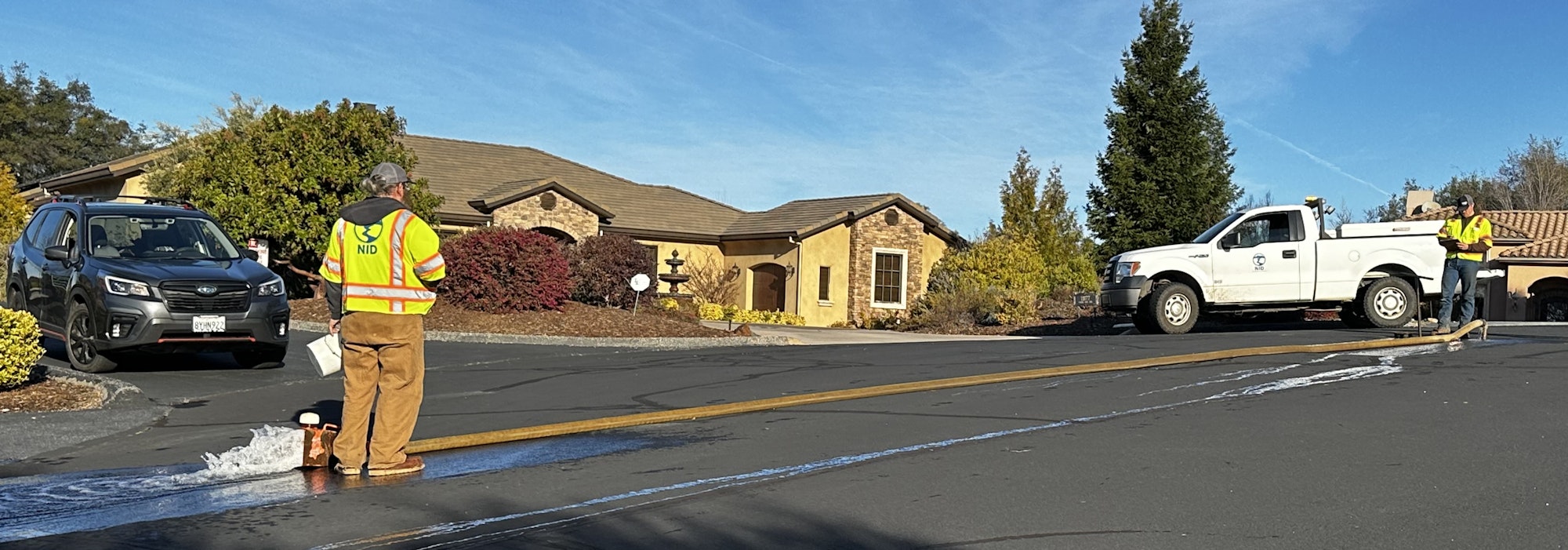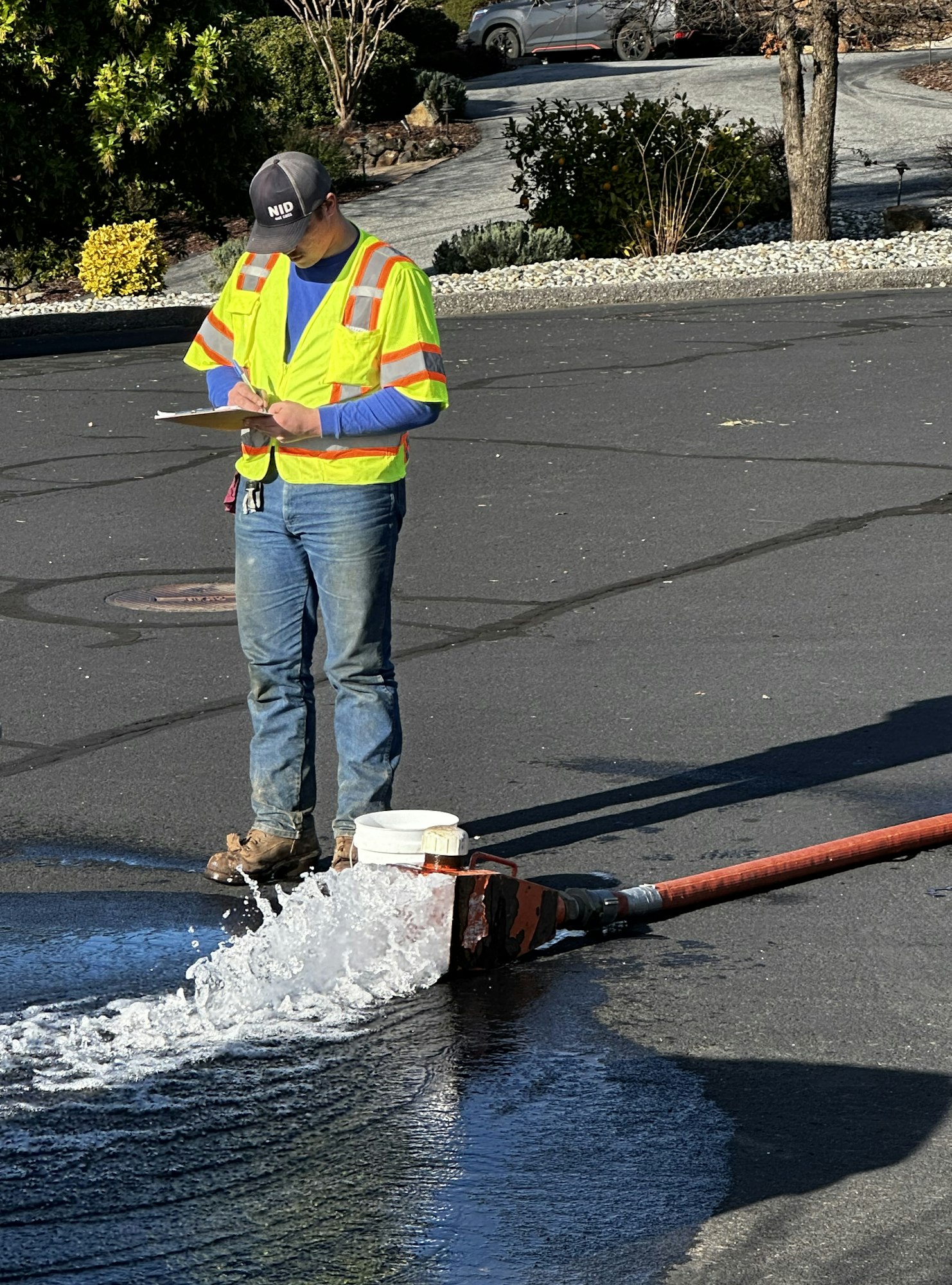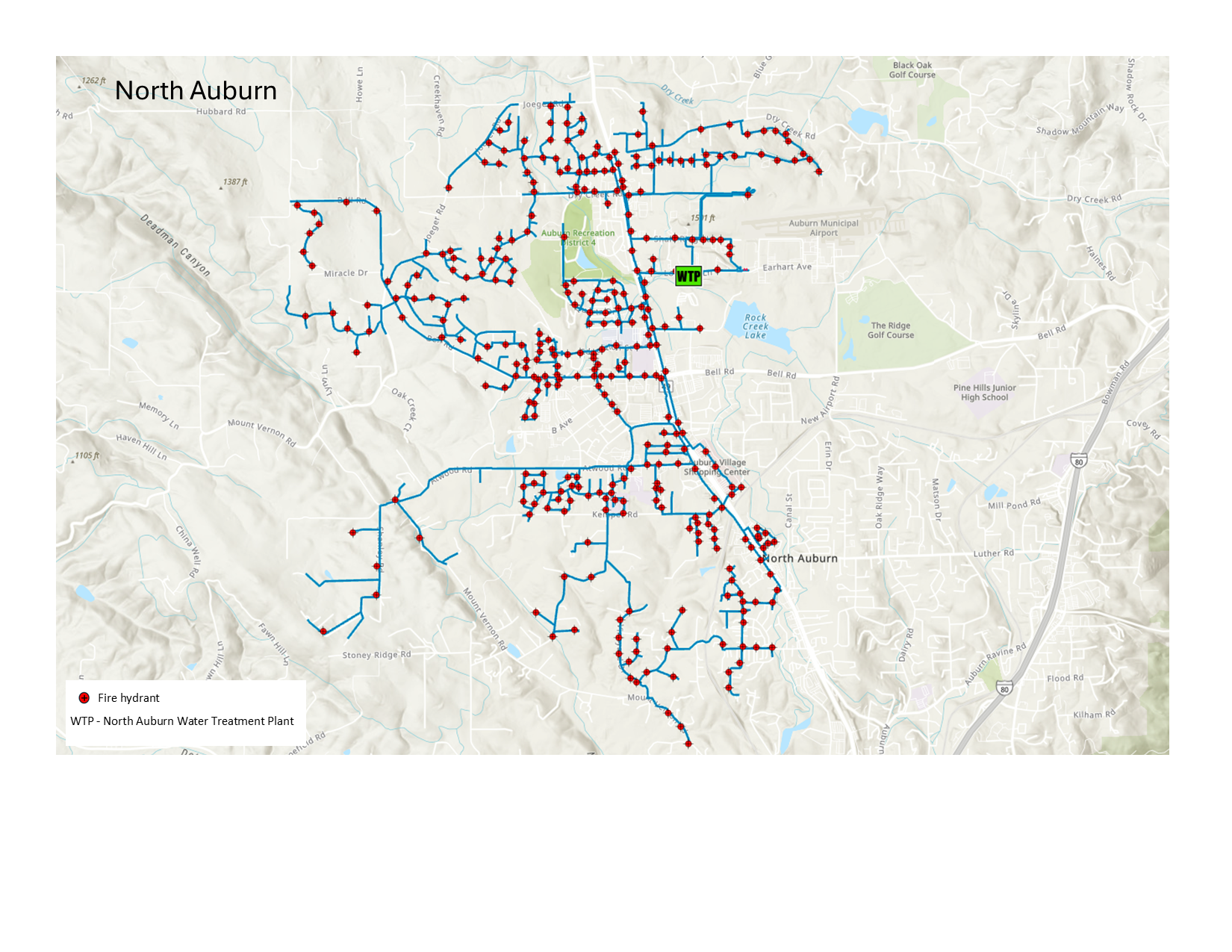NID crews go the extra mile(s) to ensure the purity of your drinking water

It’s a tall task to make sure every inch of a 400-mile pipeline is scoured to preserve the water quality as it goes from a treatment plant to customers’ taps. Nevada Irrigation District (NID) crews have been at work for months flushing the District’s entire treated water system, starting at Cascade Shores in December and finishing at North Auburn this month.
NID’s flushing program is conducted annually to ensure water pipelines function properly to deliver high-quality drinking water.
Flushing a water main system means forcing water through a section of distribution pipes. This scouring action cleans the pipes’ inner walls and helps to remove the potential of buildup of naturally occurring debris and sediment.
“We are fortunate; our local water is snowmelt from the Sierra,” said Gene Presley, NID Senior Water Distribution Operator. “Still, sediment can build up in pipes routine repairs, and it needs to be flushed out each year. The scouring procedure helps maintain water quality and address issues like discoloration or poor taste by removing debris particles.”
“Flushing is used to bring fresh water into a part of the distribution system where the water main dead ends. At low points in the main lines and at dead ends sediment will settle we have to open it up at the end and get it out,” he said, noting there are nearly 500 dead ends throughout the NID treated water system. Each one needs to be flushed and tested for proper chlorination and turbidity.
In addition to scouring the distribution pipes, there are other benefits. Flushing the water main lines also ensures that fire hydrants are operational and allows the operator to assess the available water pressure and flow rate for firefighting purposes. Also, The process is an important part in maintaining regulatory required chlorine residuals in outer areas of a water distribution system.

The flushing process: how’s it done?
The flushing process means much more than simply turning on a valve and letting water run.
NID has a crew of three workers, each with specific role in the process: a senior member doing calculations, another in charge of hooking up the equipment to complete the flush, and one other to gauge the flows and take on-the-spot water quality and turbidity tests.

The design of NID’s water system resembles a complex web of underground pipelines. The flushing process breaks this into manageable segments. The crew starts at the water source, either a tank or treatment plants, and then works systematically down the system. On average, they can complete 20-25 flushes a day.
During the process, the NID crew will take a pre-chlorine residual test, then post-chlorine test after the flush to make sure that the pipes are clean.
“The goal is to make the residual the same from the top of the system to the bottom,” said Water Superintendent Nathan Wasley.
Once the flush starts, initially the water will be cloudy; that’s the sediment buildup escaping. The flow will continue until it is clear, and a turbidity test confirms the line is clear. Depending on the section of the system, the process can take minutes or up to an hour.
“When flushing a distribution system, you quickly realize how important it is,” Presley said. “I’m taking care of the water, and that's life - water is life.”
NID treated water operations
NID owns and operates six water treatment plants with a total treatment capacity of 41.64 million gallons per day (MGD). Annually, NID produces about 2.8 billion gallons of water to approximately 19,500 customers.
Year after year, the District’s drinking water meets and exceeds state and federal public health standards. An annual Water Quality Report summarizes NID’s water quality monitoring and testing programs for each calendar year. The information focuses on water supplied through the Elizabeth L. George, Loma Rica, Lake Wildwood, Lake of The Pines, North Auburn water treatment plants.
Watch a short video (2:44 minutes) of the NID flushing crew at work, click here
In total, NID has installed 2,900 hydrants districtwide. To see a visual, for example, here’s a hydrant map for North Auburn.
Where’s the nearest NID hydrant to you? Check out NID’s locator map, click here.

